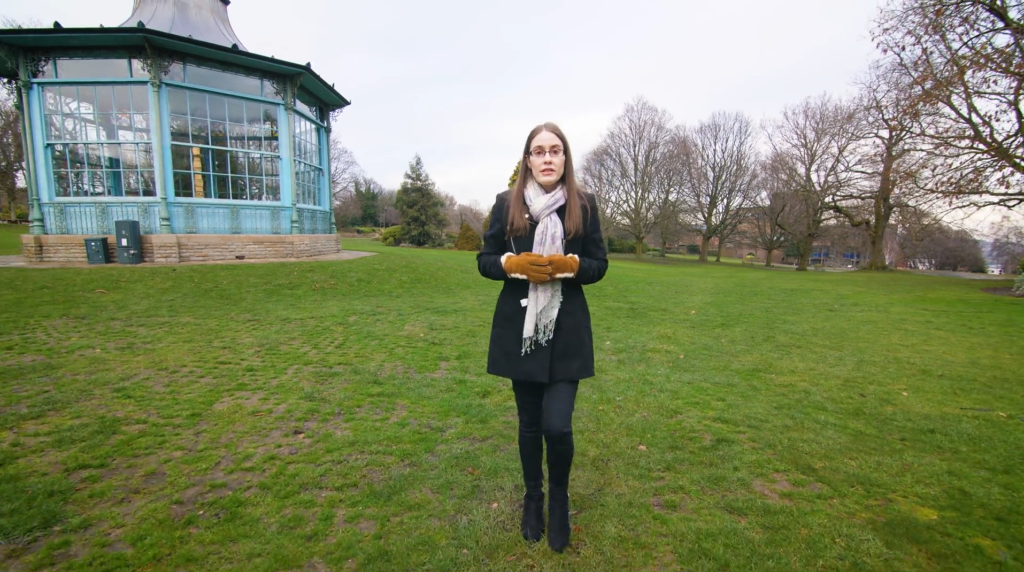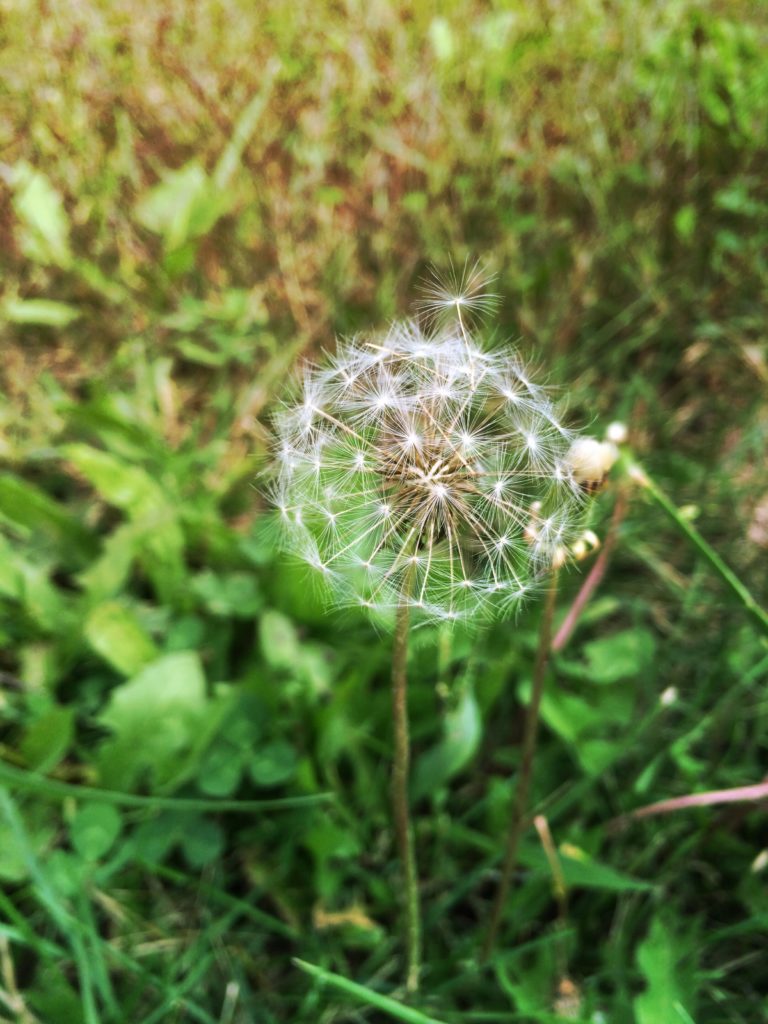By Fiona J. Clarke, School of Sport, Exercise and Rehabilitation Sciences.
Cities can be stressful. And equally, they can be put under stress themselves. When we consider the wellbeing impact of urban nature, we tend to think principally of human health and perhaps environmental health, too. But what about the health of the cities that we call home? How do humans, nature, and cities interact to support each other? In considering what would be a useful framework for conceptualising cities and wellbeing, I would like to propose that we begin to think of cities, nature, and physical health in the same way that we do about mental health: languishing or flourishing. Through this lens, we can develop a more holistic understanding of the value of urban greenspace.
Nature and Mental Health
Dedicating the 2021 Mental Health Awareness Week1 to the theme of Nature cast a spotlight on the benefits of engaging with the natural world, pinpointing this as a mental health priority. It helped to raise awareness of the rapidly developing evidence-base of the mental health benefits of nature and bring this topic to those who may not otherwise engage with the academic research. To continue the conversation beyond Mental Health Awareness Week, in this piece I consider the benefits of and challenges for nature connection research, and specifically around urban nature. As a researcher on the NERC-funded IWUN project (Improving Wellbeing through Urban Nature)2, I collaborated with an interdisciplinary team to explore how urban nature can benefit city residents, particularly those experiencing higher levels of poor health. You can visit http://iwun.uk to hear me talk a bit more about our vision.

More recently, my personal research3 has focussed on nature-based therapeutic practice, namely Shinrin-yoku (Forest Bathing), as an accessible and effective way to not only alleviate mental health symptoms, but promote overall wellbeing.
Benefits of Nature Connection
The link between nature and mental wellbeing is rather well understood. Both immediate wellbeing benefits, as well as more sustained benefits around our capacity to develop personal resilience, are received through nature connection. We know that natural spaces and tree-lined streets may promote physical activity and increased time spent outdoors. We also know that greenspaces, such as public city parks, play a role in physical rehabilitation and promotion of overall health.
Our primary research into the benefits of Forest Bathing adds to an extensive body of literature, from Japan and South Korea, around the positive effects of mindful engagement with woodland4. Aside from the mental health benefits of this practice, we also know about its physical advantages. For example, trees emit phytoncides known to increase NK cell activity5; and Forest Bathing reduces stress, as captured by key biomarkers and heart rate variability.
However, it is not necessarily the amount of time we spend in nature that counts. What matters is our level of connection with nature, determined by the meaning and emotions we attach to our experiences. Making this distinction steers us away from a suboptimal dose-response mindset6. This approach has been criticised for being too reductionist: a doctor prescribes X amount of time ‘in nature’ 3 times per week and you will achieve the outcome Y. But what happens if you do not achieve outcome Y? Or what if you have experiences of biophobia – fear of nature? The dose-response mindset does not permit much leeway for those who do not fall into the normative category. It may also promote an unrealistic and unhelpful expectancy that you will achieve positive results by passively ‘being’ in nature as opposed to actively connecting.
Connecting with Urban Nature
Through my research role on the IWUN project2,7, we developed a smartphone app that prompted users to notice the good things in urban nature. This social prescription led to clinically significant improvements in wellbeing8,9. It was interesting to explore the range of urban nature that people noticed and valued. Paying attention to mundane nature in highly built-up areas led to feelings of awe and joy, while adding meaning to people’s day-to-day lives and supporting expressions of gratitude.

Quality, Not Quantity
Birmingham contains 4,700 ha of greenspaces, including parks and allotments. A report published by Birmingham City Council and the Consultancy for Environmental Economics & Policy (CEEP; 2019) revealed that these greenspaces represent assets of £11.4 billion, or £619 million annually, including £4.6 billion in health benefits10. City parks constitute a large portion of urban greenspace and are hubs for wildlife, accounting for a great deal of avian biodiversity11. Parks have been a focus of research, as they can be capitalised on as freely accessible spaces for people to explore.
Crucially, however, and as indicated by de Vries et al.12, we must consider not only the quantity of available greenspace, but its quality. There are undoubtedly detrimental effects of poorly managed, unsafe, or littered greenspaces: the perceived futility of another uninspiring grassy embankment, where we might instead have walked along a green corridor. We know that in parts of the UK, for example, 50% of those living in areas of high socioeconomic deprivation perceive the quality of local urban greenspace to have deteriorated over the past five years13;and within England there is a clear greenspace gap14.
This speaks to the inequalities of nature connection and comes back to a classic paradox: those who would likely benefit most from nature are those who have fewer opportunities to connect with quality greenspace. The levelling up agenda15 is a current focus of the UK Government and represents an opportunity to reduce these inequalities. But for those who currently do have less opportunities to connect with quality greenspace, it is important to create multiple opportunities that may resonate differently depending on individual preferences.
Creating Opportunities to Connect
People bring their own narratives of what nature does or does not mean for them. People come with histories and stories to tell of their experiences with nature, some positive and others potentially negative. While it is up to the individual to choose how they would like to connect, we have a responsibility to inform around the need to create a variety of options for connecting with urban nature.
Providing novel opportunities for people to utilise urban greenspaces contributes to the reciprocal wellbeing of humans, cities, and nature. This can be thought of as a way of feeding back into urban life, i.e., giving back to the places that support us. Indeed, in considering the wellbeing of the city, urban greenspaces present opportunities for places to be renewed and revitalised, breathing fresh life into the heart of built-up areas.
Day-to-day urban greenspaces can:
- Be places to host events, bringing people together
- Create opportunities for mindful awareness, engagement, and gratitude
- Offer space to cultivate and nurture plants and vegetables, while participating as an active member of the community16
- Act as spaces for therapeutic intervention.
Regarding the last point, there are frequent calls to improve the uptake of nature-based social prescriptions. For example, there has been a rise in popularity of nature-based walk-and-talk therapy; as well as therapeutic interventions such as Forest Bathing. The latter could be offered as an accessible and cost-effective way to not only connect the inner city with nature-based experiences on people’s doorstep, but crucially to develop a new appreciation for where we live.
Physical and Environmental Flourishing

In considering our broader appreciation of where we live, there would be value in conceptualising cities, nature, and physical health in the same way that we have come to think of mental health, i.e., lying on two continua of high-low mental health and high-low mental illness17. Specifically, in the presence or absence of physical disease or ailment, there is scope for languishing and flourishing. The same goes for environmental health. While a patch of grass is, by most accounts, better than nothing at all, it could be seen as languishing. Thinking of urban areas in this way could:
- Help to focus our attention on developing opportunities to nurture flourishing cities that are not static, but dynamic, organic, fluctuating, and responsive (like humans)
- Represent a greater return on investment for policy and practice
- Help to inform an action plan for how to develop quality greenspaces for the mutual benefit of humans, nature, and cities
- Add value to the conversation around how nature is conceptualised in Western society, given we typically view nature as something external that is ‘out there’ and largely separate from ourselves as humans
- Change our collective mindset concerning the true value and meaning of nature in our day-to-day lives.
Finally, let’s not think of the health of our city and the environment as a fortuitous by-product of urban nature connection. Let’s place it at the core of what makes us feel good. By living in and spending time in cities, we contribute to them, just as they help to shape our wellbeing experiences.
References
1. The Mental Health Foundation. Retrieved from:
https://www.mentalhealth.org.uk/campaigns/nature/nature-research.
2. IWUN project. Accessed via: http://iwun.uk/.
3. Clarke, F.J., Kotera, Y., & McEwan, K. (2021). A qualitative study comparing mindfulness and Shinrin-yoku (forest bathing): Practitioners’ perspectives. Sustainability. [Manuscript in press].
4. McEwan, K., Giles, D., Clarke, F.J., Kotera, Y., Evans, G., Terebenina, O., Minou, L., Teeling, C., Basran, J., Wood, W., & Weil, D. (2021). A pragmatic controlled trial of forest bathing compared with Compassionate Mind Training in the UK: Impacts on self-reported wellbeing and heart rate variability. Sustainability, 13(3), 1380. https://doi.org/10.3390/su13031380.
5. Li, Q., Kobayashi, M., Wakayama, Y., Inagaki, H., Katsumata, M., Hirata, Y., Hirata, K., Shimizu, T., Kawada, T., Park, B.J., Ohira, T., Kagawa, T., & Miyazaki, Y. (2009). Effect of phytoncide from trees on human natural killer cell function. Int J Immunopathol Pharmacol., 22(4), 951-9. https://doi.org/10.1177/039463200902200410.
6. Bell, S.L., Leyshon, C., Foley, R., & Kearns, R.A. (2018). The “healthy dose” of nature: A cautionary tale. Geography Compass, 13(1), e12415. https://doi.org/10.1111/gec3.12415.
7. Dobson, J., Birch, J., Brindley, P., Henneberry, J., McEwan, K., Mears, M., Richardson, M. & Jorgensen, A. (2020). The magic of the mundane: The vulnerable web of connections between urban nature and wellbeing. Cities, 108, 102989. https://doi.org/10.1016/j.cities.2020.102989.
8. McEwan, K., Richardson, M., Sheffield, D., Ferguson, F.J., & Brindley, P. (2019). A smartphone app for improving mental health through connecting with urban nature. International Journal of Environmental Research and Public Health, 16, 3373. https://doi.org/10.3390/ijerph16183373.
9. McEwan, K., Ferguson, F.J., Richardson, M. & Cameron, R. (2020). The good things in urban nature: A thematic framework for optimising urban planning for nature connectedness. Landscape and Urban Planning, 194. https://doi.org/10.1016/j.landurbplan.2019.103687
10. Hölzinger, O., and Grayson, N. (2019). Birmingham Health Economic Assessment & Natural Capital Accounts: Revealing the True Value of Council-Managed Parks and Greenspaces. Birmingham City Council: Birmingham. Retrieved from https://www.birmingham.gov.uk/news/article/454/true_value_of_city_s_parks_and_open_spaces_calculated_at_11billion.
11. Cameron, R.W.F., Brindley, P., Mears, M., McEwan, K., Ferguson, F.J., Sheffield, D., Jorgensen, A., Riley, J., Goodrick, J., Ballard, L., & Richardson, M. (2020). Where the wild things are! Do urban green spaces with greater avian biodiversity promote more positive emotions in humans? Urban Ecosystems, 23, 301-317. https://doi.org/10.1007/s11252-020-00929-z.
12. de Vries, S., van Dillen, S.M.E., Groenewegen, P., & Spreeuwenberg, P. (2013). Streetscape greenery and health: Stress, social cohesion and physical activity as mediators. Social Science & Medicine, 94, 26-33. https://doi.org/10.1016/j.socscimed.2013.06.030.
13. The Third State of Scotland’s Greenspace Report, February 2018. Retrieved from: https://drive.google.com/file/d/1aQLMu60G5WRi4QKBCuZJ92oT8eM2sxd3/view.
14. Friends of the Earth. Retrieved from: https://policy.friendsoftheearth.uk/sites/files/policy/documents/2020-09/Green_space_gap_full_report_0.pdf.
15. UK Government Levelling Up Agenda. Retrieved from: https://www.gov.uk/government/collections/new-levelling-up-and-community-investments.
16. Richardson, M., Richardson, E., Hallam, J. & Ferguson, F.J. (2019). Opening doors to nature: Bringing calm and raising aspirations of vulnerable young people through nature-based intervention. The Humanistic Psychologist, 8 July. https://doi.org/10.1037/hum0000148.
17. Westerhof, G.J., & Keyes, C.L.M. (2010). Mental illness and mental health: The two continua model across the lifespan. Journal of Adult Development, 17(2), 110-119. https://doi.org/10.1007/s10804-009-9082-y.
Photo Credit
@Stephanie.Chinn and @smbnyc on Reshot.
